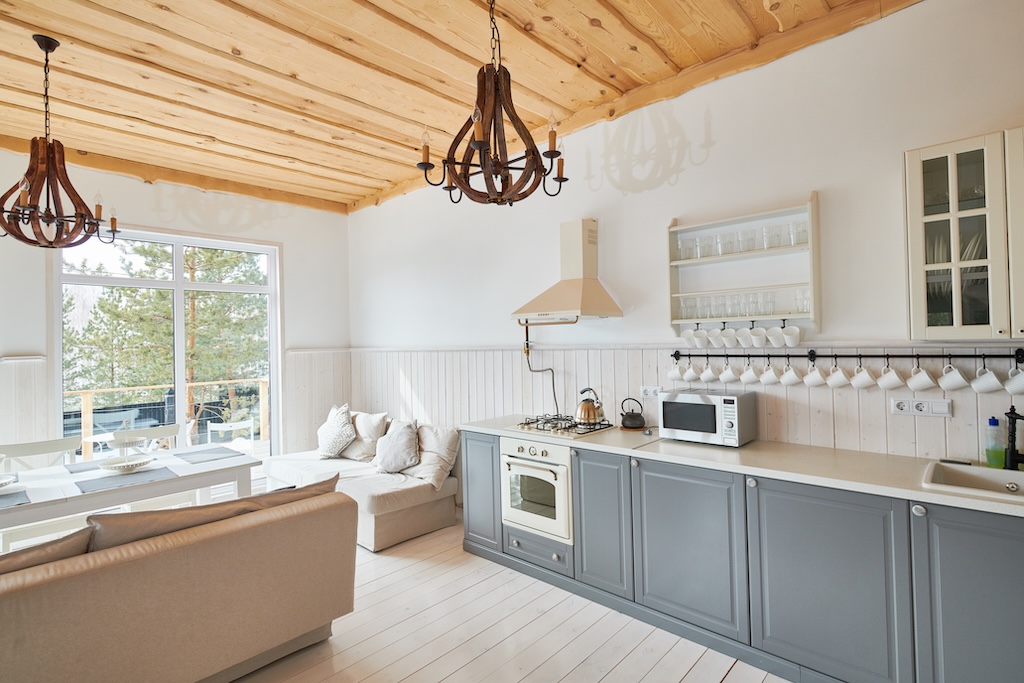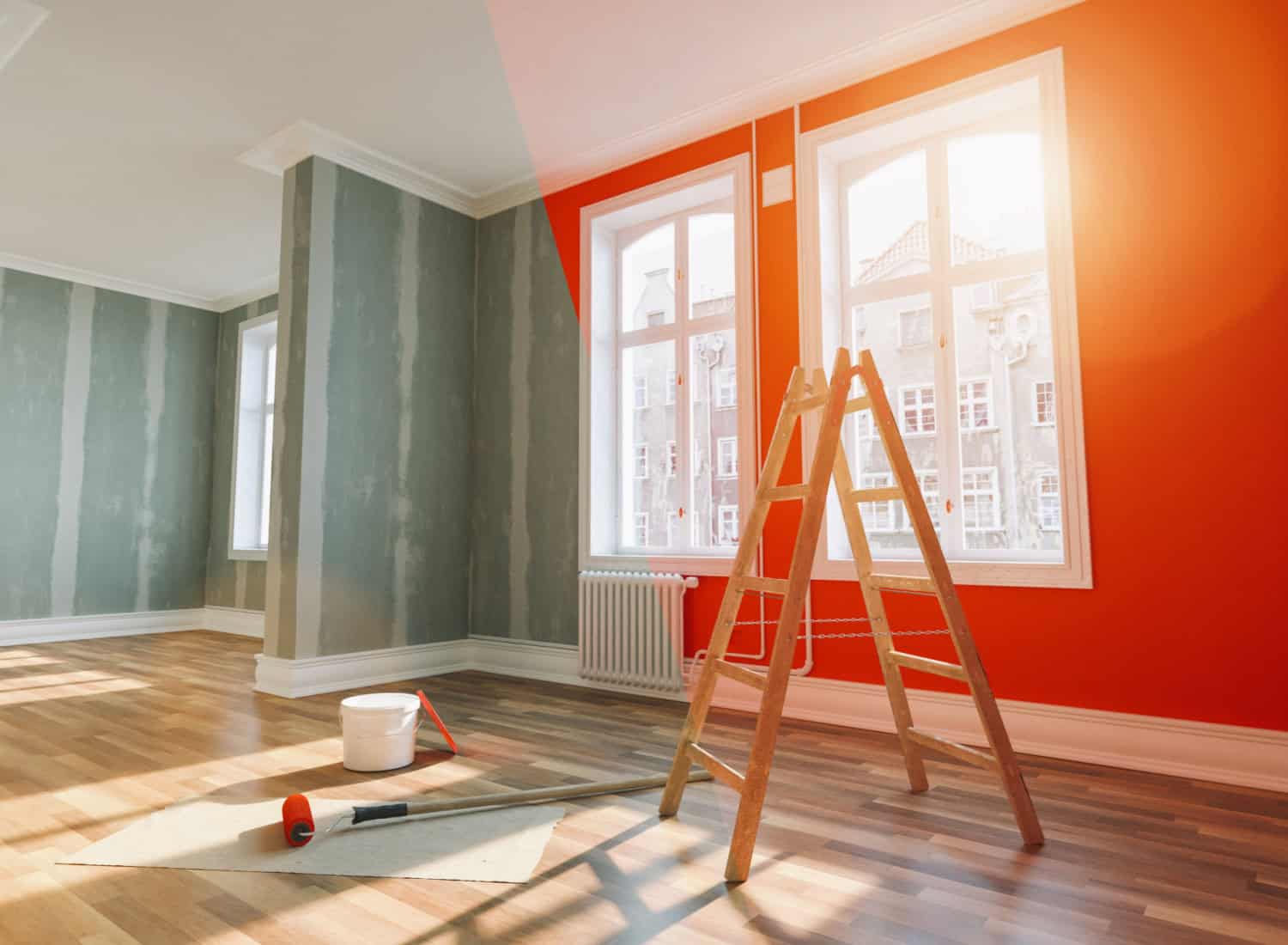Enhance Your Interior Layout With Comprehensive Shade Consultation
The integration of shade assessment into interior style provides an one-of-a-kind opportunity to fine-tune and raise the emotional and aesthetic resonance of a space. By engaging with a seasoned shade consultant, you can browse the intricacies of color option, making certain that your options not only enhance building attributes yet also reverberate with individual design and emotional impact.
Advantages of Color Consultation

Moreover, shade assessment help in making best use of natural light and optimizing spatial perception. Lighter shades can make a room appear even more expansive, while darker tones create an intimate setting. Cleveland Metro Painting Specialists. This strategic application of color can dramatically affect the total ambiance of any indoor area
Furthermore, specialist experts possess a thorough understanding of current trends and timeless classics, guaranteeing that the chosen colors will certainly continue to be appealing gradually. This foresight can save customers from pricey redesigns in the future. Shade examination empowers customers by supplying them with a clear vision and direction, cultivating confidence in their design choices and inevitably leading to a much more successful and satisfying interior layout result.
Comprehending Shade Psychology
The relevance of color psychology in interior decoration can not be overstated, as it dives into the psychological and emotional effects that numerous shades can evoke in individuals. Colors can influence state of mind, habits, and even performance, making them an important consideration in any type of style project.
As an example, warm colors such as red, orange, and yellow are often associated with energy and heat. They can boost feelings of exhilaration and convenience, making them ideal for social spaces like living kitchen areas or rooms. Alternatively, great shades like blue, environment-friendly, and purple tend to stimulate calmness and harmony, making them ideal for bed rooms or reflection locations.
Furthermore, making use of neutral tones can create a well balanced environment by enabling the bolder colors to stand out without overwhelming the senses. Comprehending these emotional influences enables designers to create areas that not just look cosmetically pleasing yet also promote psychological health.
Incorporating color psychology into interior decoration includes a thoughtful option of tones tailored to the intended function of each room, ultimately boosting the general experience for its occupants. This recognition is vital for accomplishing a harmonious and functional indoor environment.
The Shade Wheel Discussed
Recognizing the relationships between colors is essential for efficient interior decoration, and the color wheel functions as a beneficial tool in this procedure. The color wheel, developed by Isaac Newton in the 17th century, illustrates the spectrum of shades prepared in a round format. It comprises primaries-- red, blue, and yellow-- that can not be developed by blending other colors. Second colors, developed by integrating key shades, consist of environment-friendly, orange, and purple. Tertiary shades result from blending a primary and a secondary color, causing shades such as blue and red-orange.
The shade wheel aids designers grasp the partnerships between colors, consisting of corresponding, similar, and these details triadic systems. Complementary shades, positioned opposite each various other on the wheel, develop dynamic contrasts that can invigorate a room. Analogous shades, situated alongside one another, give a natural and harmonious appearance. Triadic schemes utilize 3 uniformly spaced shades, providing equilibrium and visual rate of interest.
Utilizing the color wheel in indoor design not only boosts visual appeal but likewise stimulates details feelings and environments, making it a crucial recommendation for shade appointment. Understanding these connections eventually equips designers to produce areas that are both practical and visually fascinating.
Picking the Right Scheme
Frequently, selecting the right palette is a decisive consider achieving an effective interior design task. An appropriate color scheme can link a room, improve its functions, and evoke wanted emotions. To begin, take into consideration the objective of the space. Different rooms serve varied features and call for schemes that show their designated use; as an example, serene colors such as soft blues or eco-friendlies work well in bed rooms, advertising relaxation.
Light can considerably alter how colors show up, so it is important to examine the area at various times of the day. A harmonious palette ought to match these attributes, creating a cohesive appearance throughout the room.
When selecting colors, make use of the 60-30-10 rule, which suggests that 60% of the area need to be a leading shade, 30% a secondary color, and 10% an accent shade. This proportion guarantees equilibrium and aesthetic passion (Cleveland Metro Painting Specialists). Example shades on the wall surfaces prior to devoting, as this permits you to see how the colors engage with one an additional and the total setting they produce in your interior design project.
Collaborating With a Shade Expert

When working with a shade professional, the process typically begins with a preliminary appointment. During this meeting, you'll review your vision, preferences, and the existing elements in your area. The expert will certainly evaluate your demands and might suggest specific shade combinations that align with your goals.
After establishing an instructions, the consultant will supply examples and visual aids to aid you visualize the suggested shade systems. This step is essential, as shades can appear in different ways under differing lights conditions.
In addition, a shade consultant can lead you in choosing complementary furnishings, artwork, and accessories to integrate with your chosen palette. By teaming up carefully, you can attain a refined visual that boosts your insides and creates a welcoming atmosphere. Inevitably, the competence of a color expert can substantially enhance the general impact of your style project.
Final Thought
In recap, detailed shade examination acts as a crucial tool for improving interior decoration. By leveraging specialist knowledge of color psychology and spatial characteristics, a tailored shade scheme can be established to stimulate specific feelings and develop a harmonious atmosphere. This critical method not just fosters a cohesive style story but likewise minimizes the danger of expensive redesigns. Inevitably, engaging with a shade professional ensures an educated and aesthetically pleasing result, boosting the general experience of the area.
By engaging with an experienced color expert, you can browse the intricacies of color selection, making sure that your selections not just enhance building attributes but look at more info also resonate with personal style and mental impact. It comprises primary colors-- red, blue, and yellow-- that can not be developed by blending other colors.The color wheel assists developers understand the partnerships between shades, consisting of complementary, similar, and triadic systems.When choosing shades, make use of the 60-30-10 regulation, which recommends that 60% of the area ought to be a dominant shade, 30% an additional shade, and 10% an accent color. By leveraging professional understanding of shade psychology and spatial dynamics, a tailored shade palette can be developed to evoke particular emotions and create a harmonious environment.